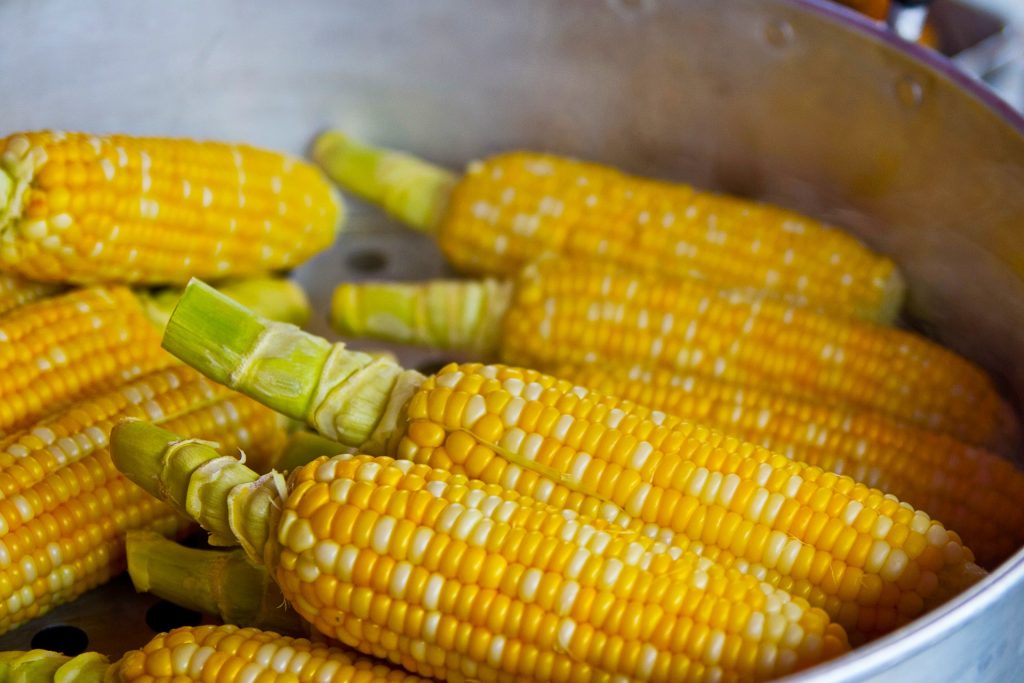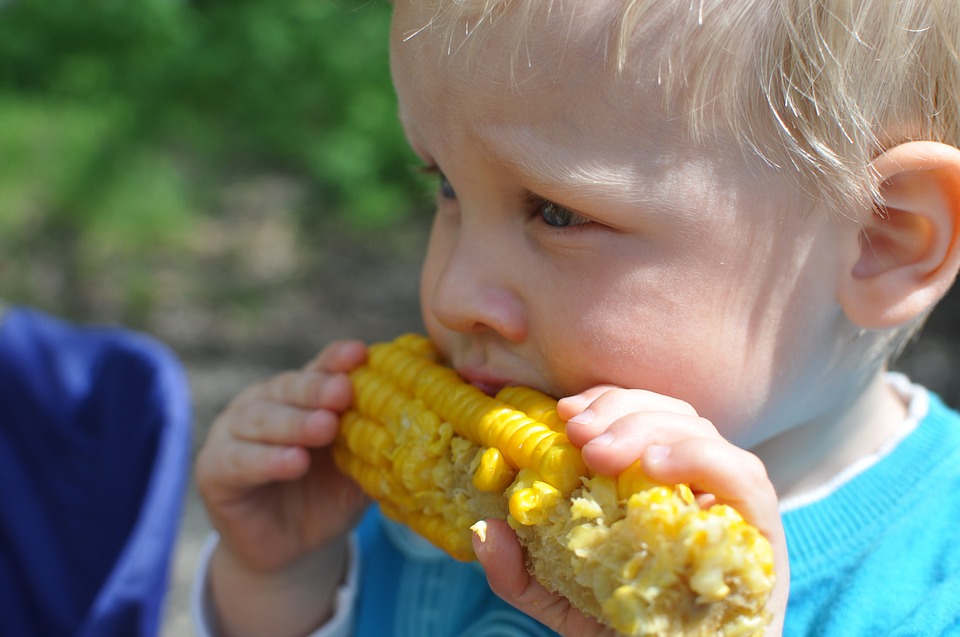Corn is one of the most widely grown crops in the United States. Although much of it is used for animal feed and other non-culinary uses, it can also be an easy whole grain addition to your diet.

When you hear the word “corn”, the first image that comes to mind may be of fresh corn on the cob. However, corn comes in many forms, including as a dried grain.
Why Eat Corn?
- Corn is a good source of vitamin A and a variety of health-promoting phytonutrients.
- It is naturally gluten-free and an inexpensive substitute for those who need to avoid wheat products.
- 1/4 cup of whole grain yellow cornmeal provides about 110 calories, 2 grams of protein, and 2 grams of fiber.
- Three cups of air-popped popcorn makes a filling, nutritious snack at only 90 calories, 3 grams of protein, and 3 grams of fiber.
Ways to Enjoy Corn
To get the whole grain benefits of corn, look for labels that state “whole corn” or “whole grain corn” as the first ingredient. Also, check to see if products are labeled “degermed”. This means that the nutritious germ has been removed, and it is no longer considered a whole grain. Though they can be harder to find, the following whole grain corn products are available:

- Corn flour
- Cornmeal
- Grits
- Polenta
Ways to Add Corn to Your Diet
- Air-popped popcorn
- Corn tortillas or chips
- Homemade pizza crust
- Muffins or scones
- Multigrain bread
- Pancakes or waffles
- Whole grain cornbread
You can incorporate this whole grain in your diet by enjoying it in a variety of dishes!
Did You Know?
Is corn a grain or a vegetable?
- The answer is both!
- Fresh corn is considered a starchy vegetable, while dried corn products (including cornmeal, cereals, and popcorn) are generally considered grains.
Both fresh and dried corn contain healthful nutrients and can also be substantial sources of calories and carbohydrates.


